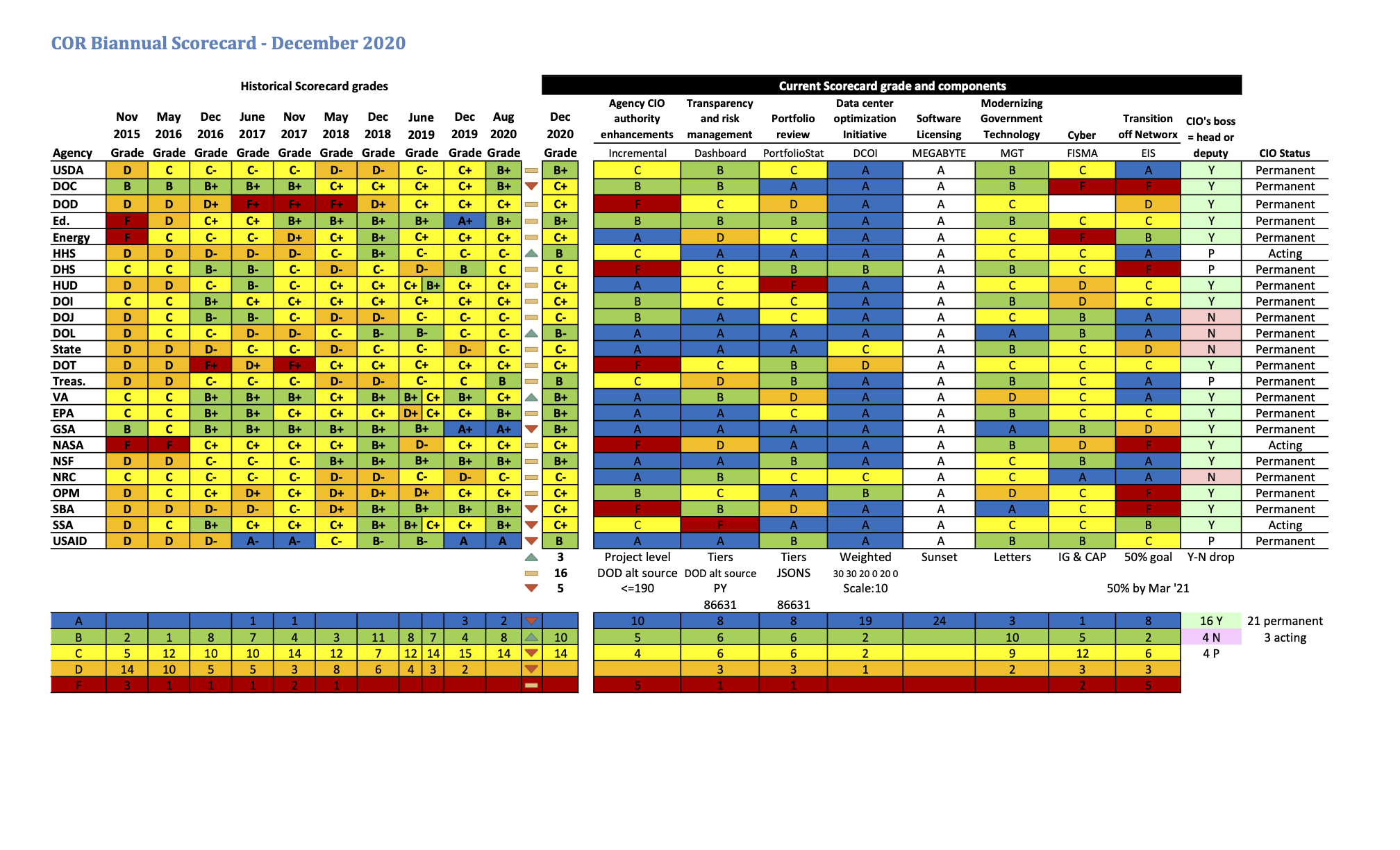No Failures in Latest FITARA Scorecard But 5 Agencies Slip

Lucky-photographer/Shutterstock.com
In a first, every agency got an A on at least one metric. But a new column on telecom transition brought several agencies down.
Taking the long view, federal agencies have been making progress on IT modernization goals since the House began tracking them in 2015 through a biannual scorecard. But the latest report card shows some slippage, mostly due to a new metric.
Since the passage of the Federal IT Acquisition Reform Act, or FITARA, the House Committee on Oversight and Reform has commissioned two scorecards each year measuring agencies' progress in a host of IT reform areas.
While the initial scorecard only measured key provisions from the FITARA legislation—including budget and hiring authority for agency chief information officers, transparency and risk management through reporting to the IT Dashboard, portfolio reviews with administration officials and progress closing and optimizing data centers—the committee has since added additional metrics. As of the last scorecard released in August, agencies are also measured on their use of the Modernizing Government Technology, or MGT, Act—which established the central Technology Modernization Fund and the ability to create working capital funds at each agency—and cybersecurity reporting through the Federal Information Security Management Act, or FISMA, framework.
Now, for the 11th scorecard, the committee added another letter grade: progress transitioning from legacy telecommunications contracts to the General Services Administration's new Enterprise Infrastructure Solutions, or EIS, contract.
Agencies have until early 2022 to make the full transition to the contract, something GSA has been vocal about since the $50 billion contract was awarded in 2017. However, as many as 11 agencies told the Government Accountability Office—which compiles the scorecard—that they won't make the deadline.

Individual agency progress on the EIS transition was included in the last scorecard, issued in August, but agencies were not given a letter grade at that time. The 10th scorecard included a column with percentages for each measured agency, which ranged from a high of 86% at the Nuclear Regulatory Commission to a low of 20% at NASA.
Agencies were given letter grades on the EIS transition in the latest scorecard, with NRC, Agriculture, Health and Human Services, Justice, Labor, Treasury, Veterans Affairs and the National Science Foundation all receiving A grades.
NASA, Commerce, Homeland Security, the Office of Personnel Management and Small Business Administration all received F grades.
Those low grades on the EIS transition were reflected in the overall scores.
Three agencies improved since August, including HHS, Labor and VA,—which all had high scores on the transition.
Five agencies dropped a grade, two of which failed the transition portion of the scorecard: Commerce and SBA. The General Services Administration, Social Security Administration and U.S. Agency for International Aid also dropped down a letter grade. While GSA and USAID slipped due to poor grades on the EIS transition, SSA was docked for transparency and risk management.
Overall, while all agencies scored a C- or above, the only remaining A-grade agencies—GSA and USAID—both dropped a grade level.
However, lawmakers on House Oversight saw some positives in the scores, including every agency getting at least one A for the first time in the scorecards history. Members also noted this is only the second time that all agencies received passing grades—a C- or higher.
“In the midst of a global pandemic, continued reliance on remote work, and an unprecedented and highly sophisticated cyberattack by a foreign adversary—the importance of federal agencies’ effective use of IT is too great to ignore,” said Rep. Gerry Connolly, D-Va., coauthor of FITARA and chair of the Oversight Subcommittee on Government Operations. “FITARA remains an effective tool at catalyzing IT advancement across the enterprise of the federal government. Lets ensure we use it to continue to raise the bar.”
Subcommittee Ranking Member Jody Hice, R-Ga., noted future scorecards could include additional metrics.
“Agencies information technology systems need to meet modern day challenges, steward taxpayer dollars, and ensure the success of their critical mission,” Hice said in a statement. “I look forward to working with Chairman Connolly to also capture how well these projects improve the taxpayers experience when engaging with agencies. In light of the recent cyberattack against several U.S. departments and agencies, it’s also imperative to reflect on their state of cyber readiness.”
NEXT STORY: Court denies Perspecta's NGEN protest



